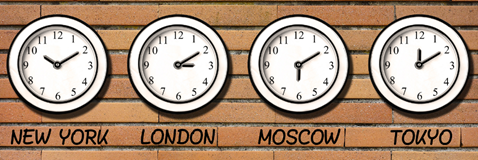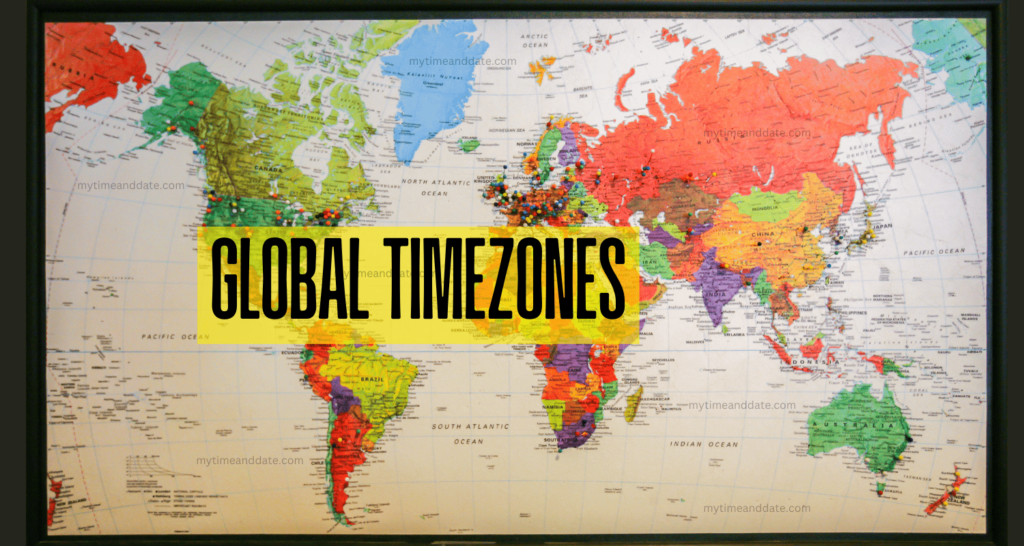Have you ever wondered how the world stays in sync despite being divided into 24 different time zones? It’s like a giant invisible clock ticking in perfect harmony, ensuring flights take off, meetings happen, and celebrations occur right on schedule. Time zones may seem like a modern invention, but their roots trace back to the late 19th century when the need for a global standard became impossible to ignore.
Before time zones, every town followed its local solar time, leading to chaos in scheduling, especially with the rise of railroads and international trade. Today, the system of 24 global time zones ensures the world operates smoothly, from the bustling streets of New York to the serene temples of Kathmandu.
In this guide, we’ll unravel the mysteries of time zones, explore the role of UTC and GMT, dive into quirks like Daylight Saving Time, and discover fun facts you probably didn’t know. By the end, you’ll not only understand the 24 global time zones but also see why they’re essential to our connected world. Let’s get started!
Time zones are like the invisible threads that keep our global clock ticking in harmony. Have you ever wondered how the world operates seamlessly with different countries running on their own schedules? Time zones make this possible, dividing the planet into manageable slices of time that ensure everything from flights to virtual meetings works without a hitch. In this guide, we’ll explore the fascinating world of the 24 global time zones, uncover their history, and help you understand how they work.
What Are Time Zones and Why Do They Exist?
Time zones are a brilliant concept if you think about it. They divide the world into 24 sections, each representing an hour of the day. Before time zones, life was chaotic. Each town followed its local solar time, meaning noon in one town could be significantly different from noon in the next. Imagine trying to schedule a train or a meeting back then is complete madness.
The need for time zones became glaringly obvious with the rise of railroads in the 19th century. Countries needed a standardized system to avoid confusion, especially for travel and trade. In 1884, the International Meridian Conference was held, and voilà, the world agreed on 24 time zones, anchored by the Prime Meridian in Greenwich, England.
The Concept of UTC and GMT
Let’s clear up a common confusion: UTC and GMT. Coordinated Universal Time (UTC) is the modern standard for timekeeping. It’s precise, based on atomic clocks, and doesn’t change with Daylight Saving Time (DST).
Greenwich Mean Time (GMT), on the other hand, is more traditional. It’s based on the Earth’s rotation and was the global standard before UTC took over. While they’re often used interchangeably, UTC is more accurate, and most international systems like aviation and internet protocols rely on it.
How the 24 Global Time Zones Are Divided
Here’s where things get interesting. The Earth rotates 360° in 24 hours, so each time zone spans about 15° of longitude. Countries adopt the time zone that aligns with their location, but there are quirks. Some regions, like Nepal, have time zones offset by 45 minutes (UTC+5:45), and others, like India, are offset by 30 minutes (UTC+5:30).
The International Date Line adds another layer of complexity. Crossing it can make you gain or lose a day. Imagine flying from Hawaii to Tokyo—you’d leave on a Monday and arrive on a Tuesday, even if the flight is just a few hours long.

Below is the comprehensive list of the 24 global time zones with their corresponding GMT and UTC offsets:
| S. No. | Time Zone Name | GMT Offset | UTC Offset |
|---|---|---|---|
| 1 | Greenwich Mean Time (GMT) | GMT ±0 | UTC ±0 |
| 2 | British Summer Time (BST) | GMT +1 | UTC +1 |
| 3 | Central European Time (CET) | GMT +1 | UTC +1 |
| 4 | Eastern European Time (EET) | GMT +2 | UTC +2 |
| 5 | Moscow Standard Time (MSK) | GMT +3 | UTC +3 |
| 6 | Gulf Standard Time (GST) | GMT +4 | UTC +4 |
| 7 | Pakistan Standard Time (PKT) | GMT +5 | UTC +5 |
| 8 | India Standard Time (IST) | GMT +5:30 | UTC +5:30 |
| 9 | Nepal Standard Time (NPT) | GMT +5:45 | UTC +5:45 |
| 10 | Bangladesh Standard Time (BST) | GMT +6 | UTC +6 |
| 11 | Indochina Time (ICT) | GMT +7 | UTC +7 |
| 12 | China Standard Time (CST) | GMT +8 | UTC +8 |
| 13 | Japan Standard Time (JST) | GMT +9 | UTC +9 |
| 14 | Australian Eastern Standard Time (AEST) | GMT +10 | UTC +10 |
| 15 | New Zealand Standard Time (NZST) | GMT +12 | UTC +12 |
| 16 | Samoa Standard Time (SST) | GMT -11 | UTC -11 |
| 17 | Hawaii-Aleutian Standard Time (HST) | GMT -10 | UTC -10 |
| 18 | Alaska Standard Time (AKST) | GMT -9 | UTC -9 |
| 19 | Pacific Standard Time (PST) | GMT -8 | UTC -8 |
| 20 | Mountain Standard Time (MST) | GMT -7 | UTC -7 |
| 21 | Central Standard Time (CST) | GMT -6 | UTC -6 |
| 22 | Eastern Standard Time (EST) | GMT -5 | UTC -5 |
| 23 | Atlantic Standard Time (AST) | GMT -4 | UTC -4 |
| 24 | Newfoundland Standard Time (NST) | GMT -3:30 | UTC -3:30 |
| Argentina Standard Time (ART) | GMT -3 | UTC -3 |
Note:
- DST Adjustments:
Some time zones, such as BST (British Summer Time), are only applicable during Daylight Saving Time and revert to standard time otherwise (e.g., GMT). - Unusual Offsets:
Time zones like NPT (UTC +5:45) and NST (UTC -3:30) are examples of offsets that don’t align with the full-hour convention. - Daylight Saving Changes:
Regions observing Daylight Saving Time (DST) may temporarily adjust their offsets, often increasing by +1 hour.
The Role of Daylight Saving Time (DST)
Ah, DST is a love-it-or-hate-it concept. It shifts clocks forward by an hour in the summer to make better use of daylight. While it’s meant to save energy and extend daylight hours, not everyone follows it.
Arizona in the United States skips DST altogether, as do most countries near the equator. The idea is controversial in some places because it disrupts sleep schedules and doesn’t always achieve its intended benefits. Still, for countries that observe it, DST adds an extra layer of complexity to timekeeping.
Simplifying Time Zone Conversions
Let’s face it: converting time zones can be a headache. But it doesn’t have to be! There are fantastic tools like the World Clock app or websites like myTimeandDate.com that make it a breeze.
Here’s a pro tip: always check if the destination observes DST, as that can throw your calculations off. For example, London operates on GMT in the winter but switches to BST (British Summer Time) during DST. Keeping track of these nuances ensures you won’t miss an important meeting or flight.
Why Understanding Time Zones Matters
Time zones aren’t just a nerdy detail—they’re essential for a connected world. Whether you’re scheduling a Zoom call with a colleague halfway across the globe or tracking the time for your favorite international sports event, time zones make it possible.
Fun fact: there are time zone anomalies, like the Chatham Islands in New Zealand, which operate on UTC+12:45. And let’s not forget the oddity of countries like China, which spans five time zones but uses just one standard time—Beijing Time.
Fun Facts About Global Time Zones
- Unique offsets: Nepal (UTC+5:45) and Newfoundland (UTC-3:30) are quirky examples.
- The International Date Line: It zigzags to accommodate countries like Kiribati, ensuring their time stays in sync with their neighbors.
- Global Time zone quirks: Some regions use “half-hour” offsets, while others, like India, stick to a single time zone despite their size.
How Time Zones Affect Everyday Life
Think about how often you rely on time zones without even realizing it. From booking international flights to coordinating remote work, they touch almost every aspect of modern life.
One of the biggest challenges is managing meetings across multiple zones. Here’s a tip: set meetings during “overlap hours” to ensure everyone is awake and alert. For instance, scheduling between 7 AM and 10 AM EST often works well for participants in both the US and Europe.
Conclusion
The 24 global time zones are a testament to human ingenuity. They’ve turned a chaotic world into a synchronized masterpiece, allowing us to connect across continents with ease. Whether you’re tracking a flight, scheduling a meeting, or simply curious about how the world works, understanding Global time zones is a skill worth having.
So the next time you check the time on your phone, take a moment to appreciate the complexity behind it. Time zones may be invisible, but their impact is undeniable.
FAQs
1. What are time zones, and why do we have them?
Time zones divide the world into 24 sections, each representing one hour of the day. They were created to standardize time for travel, communication, and trade.
2. How are Global time zones determined?
Time zones are based on longitude, with each zone spanning about 15°. The Prime Meridian in Greenwich, England, serves as the starting point (UTC+0).
3. What’s the difference between UTC and GMT?
UTC is the modern timekeeping standard based on atomic clocks, while GMT is older and based on the Earth’s rotation. Both are used for coordinating time globally.
4. Why do some global time zones have unusual offsets?
Unique offsets, like UTC+5:45 in Nepal, reflect local preferences or geographic boundaries. These offsets allow regions to align with their daily activities and provide a better fit for sunrise and sunset times, ensuring daily routines are optimized.
5. What is Daylight Saving Time, and how does it work?
DST shifts clocks forward by one hour in summer to make better use of daylight. Not all countries follow it, as regions closer to the equator experience consistent daylight. While DST helps extend evening daylight, it often causes scheduling confusion globally.
6. How do time zones affect international business?
Time zones dictate meeting times, deadlines, and workflows across countries. Coordinating across time zones ensures smooth communication and operations. For instance, overlapping hours are key to scheduling calls between continents, like North America and Asia.
7. What’s the role of the International Date Line?
The International Date Line separates two calendar days. Crossing it westward adds a day, while going eastward subtracts one. Its path zigzags to accommodate political and geographic boundaries. Countries like Kiribati adjusted their position to maintain the same date as their trading partners.
8. Are there countries with just one time zone?
Yes! China uses a single time zone (Beijing Time) despite spanning five geographical zones. This simplifies governance but creates challenges for local communities in regions like Tibet and Xinjiang, where sunrise and sunset times differ greatly from Beijing. Locals often follow “unofficial” times for convenience.
9. How can I simplify time zone conversions?
Use apps like World Clock or Time Zone Converter to make calculations easier. These tools adjust for Daylight Saving Time automatically, which is especially helpful during seasonal transitions. For international business, setting meeting times during overlap hours ensures everyone can participate without confusion or missed schedules.


